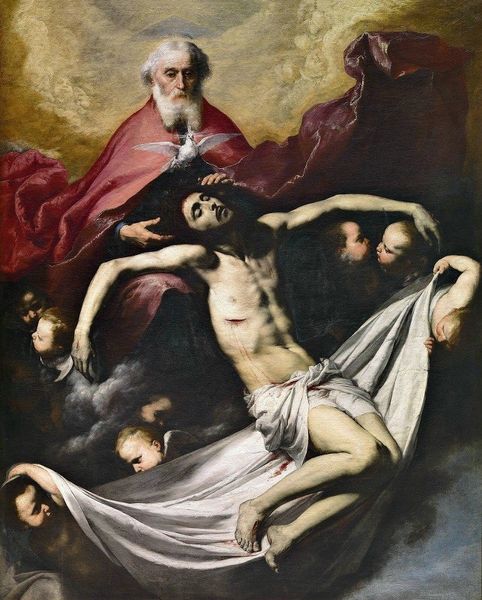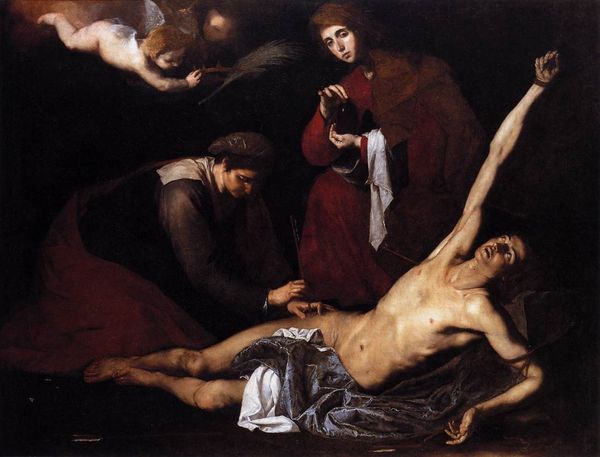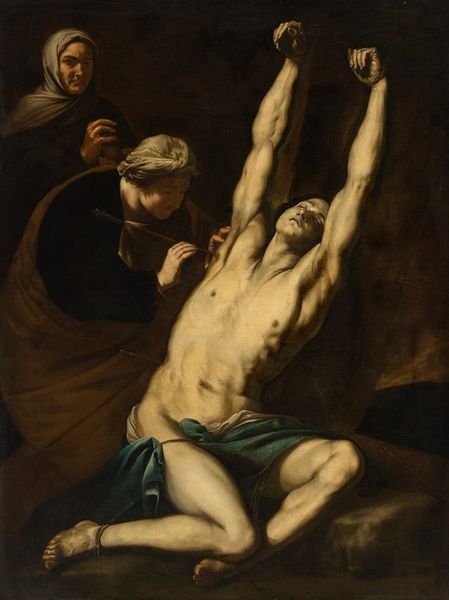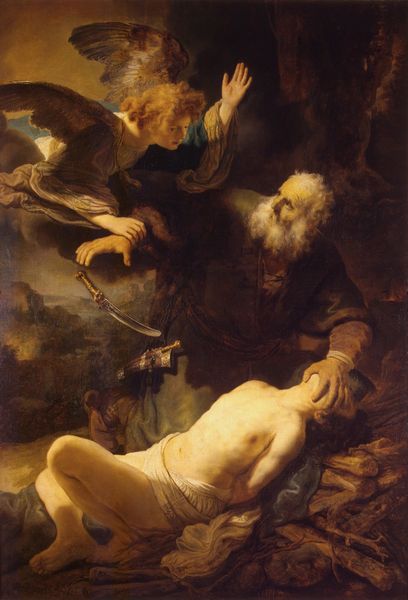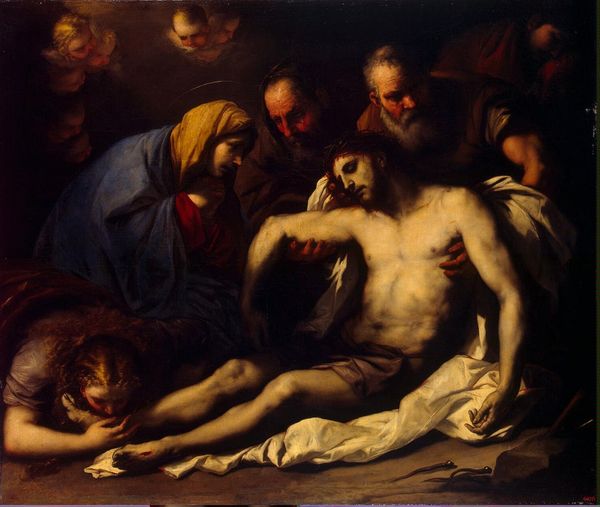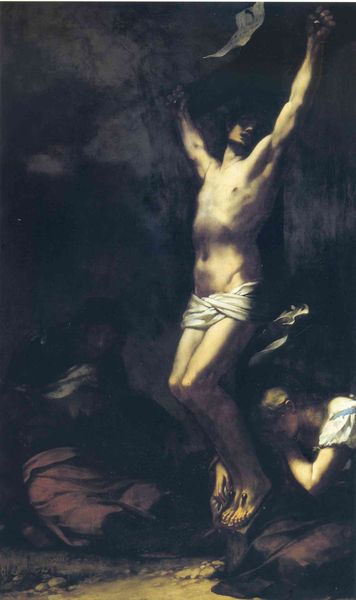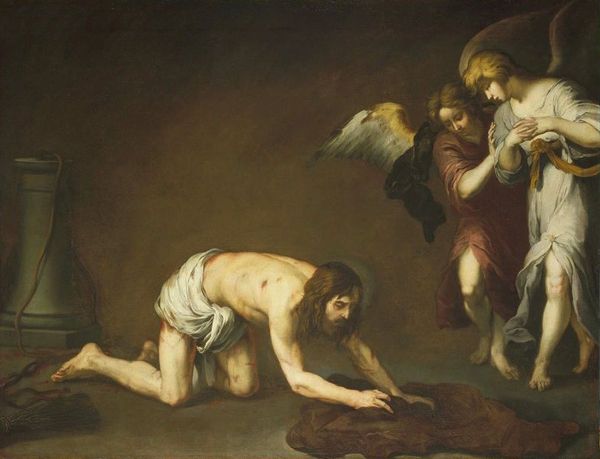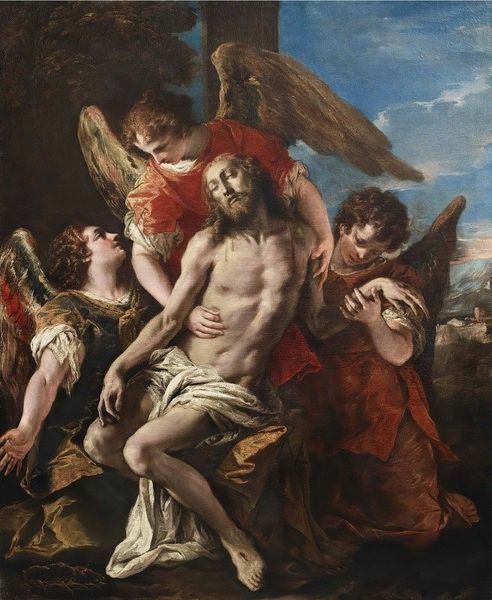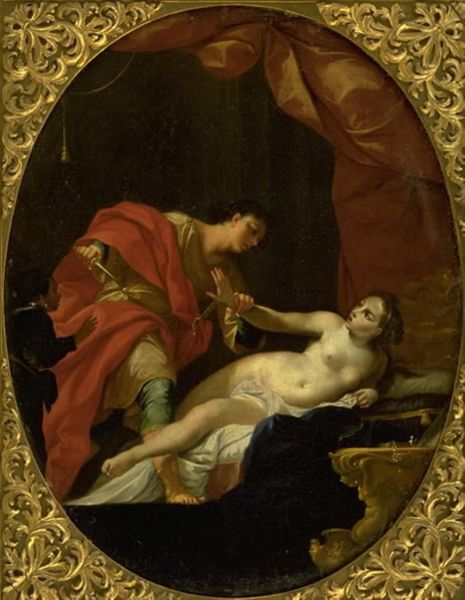
oil-paint
#
portrait
#
narrative-art
#
baroque
#
oil-paint
#
figuration
#
oil painting
#
vanitas
#
christianity
#
men
#
history-painting
#
italian-renaissance
#
portrait art
#
angel
Dimensions: 133 x 185 cm
Copyright: Public domain
Editor: So, this is Jusepe de Ribera’s "St. Jerome Hears the Last Trumpet" from 1626, an oil painting currently held at the Hermitage. The lighting is intensely dramatic, almost theatrical. I’m struck by the contrast between the aged Jerome and the cherubic angel. What layers are at play in how this work has been historically received? Curator: This piece is deeply rooted in the Counter-Reformation’s artistic program, which sought to reaffirm Catholic doctrine and piety through compelling, emotional imagery. Ribera, working in Naples which was then under Spanish rule, would have been directly impacted by this. Notice how Jerome’s aging body is rendered with unflinching realism – this emphasis on physicality was a deliberate attempt to connect with the viewer on a visceral level. Do you see the symbolism employed? Editor: Yes, I do. The skull of course reminds us of mortality, then there's the lion which reminds us of Saint Jerome's story... What strikes me, though, is the intensity of Jerome's expression – almost terror – when confronted with the divine call. Is this meant to inspire or to perhaps caution the viewer? Curator: Both, perhaps. The Church was very interested in dictating artistic representation. Ribera presents a St. Jerome not as an idealized saint, but as a vulnerable human being grappling with the immense weight of divine judgment. The very public message conveyed by the art could have had several different levels, but most certainly one that inspires self reflection. Editor: It's amazing how historical context reshapes how one looks at the artwork itself! I see now the importance of viewing art with a wider lens. Curator: Precisely. By understanding the historical and institutional forces at play, we gain a deeper understanding of not only the artwork itself, but also the society that produced and consumed it.
Comments
No comments
Be the first to comment and join the conversation on the ultimate creative platform.
